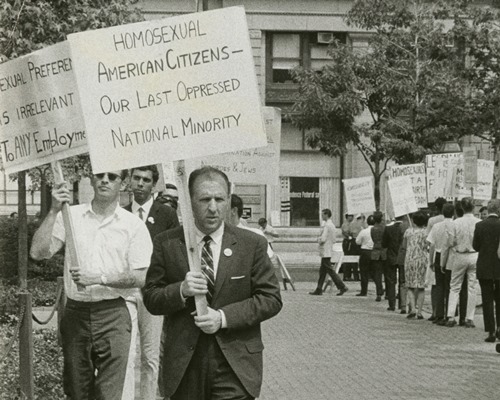
Frank Kameny leads a picket line in front of Independence Hall in Philadelphia on July 4, 1965 (Full Exposure Films)
Just in time for Pride month comes this documentary based on the acclaimed 2006 book The Lavender Scare: The Cold War Persecution of Gays and Lesbians in the Federal Government, by historian David K. Johnson. This much-needed history lesson gives an eye-opening look at a little-known period of discrimination that helped push forward the Gay Rights Movement in the late 1960s through today.
Director Josh Howard takes us back to a period just after the Great Depression, when the New Deal had created jobs for masses of Americans, many of whom were gay and lesbian who moved to major cities. The film then tracks the development toward the “lavender scare,” namely the publication of Dr. Alfred Kinsey’s book Sexual Behavior in the Human Male in 1948. Readers were shocked to read the findings in the study that homosexuality and same-sex sexual behavior, even among so-called straight men, was widespread. The film claims it was this truth bomb that sparked what we now call homohysteria.
Not long after Kinsey’s book, Senator Joseph McCarthy of Wisconsin began the Cold War witch hunt known as the “Red scare,” but what is often left out of history lessons is that it not only targeted intellectual leftists and smeared them as communists but it also sought out homosexual men and women. Senator McCarthy believed they could easily be turned into spies for enemies of the United States if they were threatened with being outed. From there, in 1953, President Dwight D. Eisenhower signed an executive order that homosexuals could not work for the federal government. As a result, government workers were interrogated and asked to expose any of their coworkers they suspected of being homosexual. The purge was so rampant that the State Department reported that one homosexual was ousted per day. The prohibition lasted four decades and caused the firings of tens of thousands of government workers and many, many untimely suicides.
The film gives us several first-person accounts by those who were removed from their government jobs, and in some cases, they had awesome bosses who fought to get their jobs back—and won. On the other hand, Andrew Ference’s story is told from the perspective of his niece. His family considered him a happy, non-conflicted man, who, from out of nowhere, died by suicide. Perhaps the most harrowing section is when the filmmaker interviews a man responsible for many inquiries of suspected individuals and who is on the record for saying something so wickedly apathetic I will not reprint it here. You will be shocked when you hear it.
The film isn’t a complete downer, though. In fact, Howard’s film never dwells too long in the more depressing aspects of the purge. Instead, it continually points out the silver lining, that the discrimination of gays and lesbian throughout the mid-20th century actually strengthened them to pick themselves up, organize, and fight the power.
The film really picks up once it introduces Frank Kameny, an astronomer who was removed from his job and the first person to contest his firing. He was no-nonsense, akin to Ralph Nader or Bernie Sanders. Colleagues and even Kameny himself state that he was the kind of man who didn’t change his beliefs because the world didn’t agree with them. He instead knew his beliefs were right. After his firing, he headed the Washington chapter of the Mattachine Society, one of the first LGBTQ rights organizations in the country. From there, he organized the first ever LGBTQ protest in front of the White House. More than 40 years later, he was recognized for his efforts by President Barrack Obama. The narrative Howard weaves, like Johnson’s book before him, sets out to lift the viewer up and highlight how all of the freedoms the LGBTQ community has won since the 1970s were spurred by this unfortunate period.




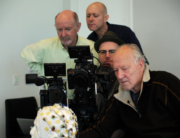




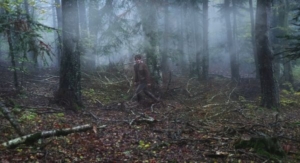
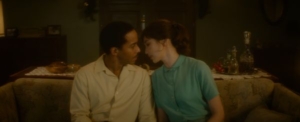




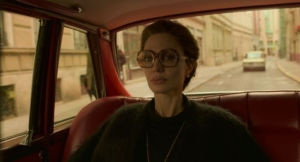
Leave A Comment